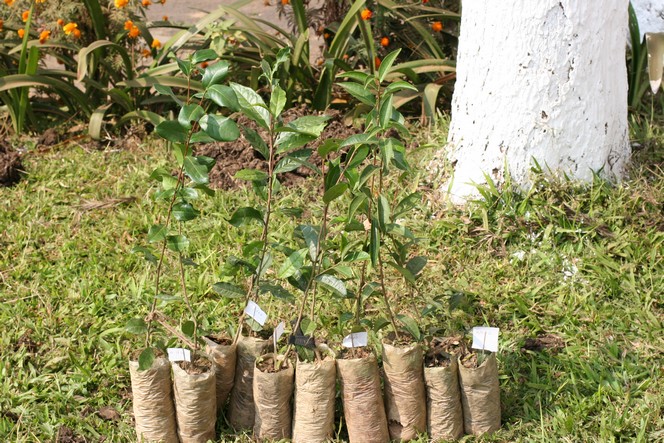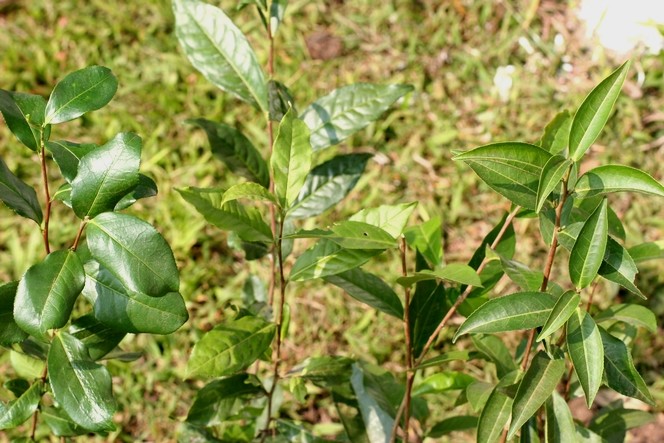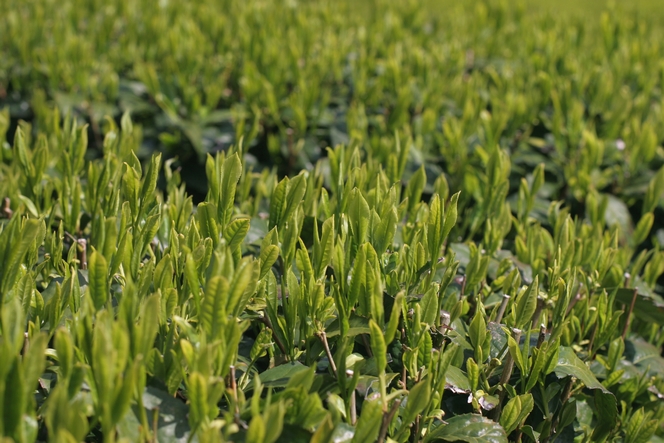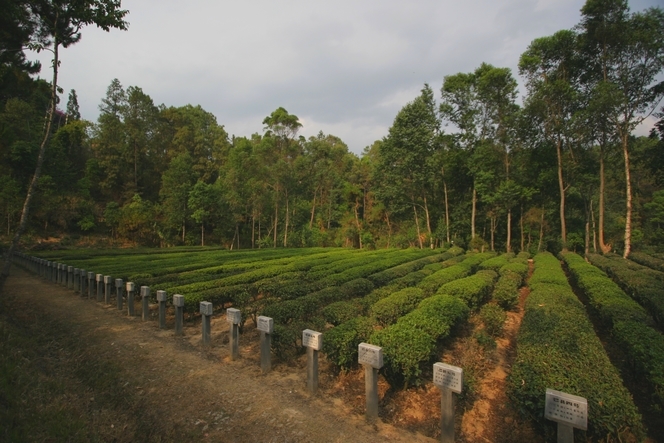In the same way that wine can be made using different grape varieties, tea comes from different plants, each with its own characteristics. In this photo you can see the main cultivars used in the Darjeeling region (India). When a particular lot of tea is made solely from these varieties, Indians call it “clonal”. The word “clonal” on a label does not mean the tea comes from a cloned plant, but simply that the leaves were harvested from very specific cultivars. Some of these cultivars have been developed by an agronomic research institute and are known for their excellent quality and flavour.
Cultivars
B157, P312 and AV2 : three cultivars from Darjeeling
Here we have, from left to right: B157, P312 and AV2. These are their familiar names. Their full names are as follows: Bannockburn 157, Phoobsering 312 and Ambari Vegetative 2. They are cultivars, or “clonals”, as they are called here: tea plants created using different methods, generally by taking cuttings.
Each of the three cultivars has its advantages and disadvantages in terms of its weather hardiness and resistance to pests, its taste and aromatic qualities, and its productivity. They take their names from the plantation that created them.
These cultivars, along with some 30 others developed by the Tea Research Association, are suited to the Darjeeling region. Different cultivars are grown in other parts of the world.
Yabukita: the most popular cultivar in Japan
While all tea plants belong to the camellia family, you know that there are different cultivars within that family. Here in Japan, the tea plant most commonly grown is Yabukita. It accounts for 85% of the tea crop, unlike in other tea producing countries, where many different varieties cohabit.
Yabukita is easy to recognise with its long, straight, intense green leaf. It also has its own way of growing, very straight, reaching up for the sky.
Cultivar is to tea what grape variety is to wine
All tea plants are members of the Camellia Sinensis species, but there are a great many cultivars, each with their own unique characteristics and qualities. Some are more resistant to the cold, for example, or to certain parasites. Others produce a more abundant crop.
Here, in Feng Qing, near Lincang (China), tea planters breed a wide variety of cultivars in order to experiment with grafting, for example, to produce new hybrid tea plants.
I visited this tea garden last year between two tastings of Pu Er, the main tea found in the region and manufactured from a cultivar called “Da Ye” (big leef).
Moreover, it’s here, near Lingcang, that the old tea and horse exchange road comes by.




